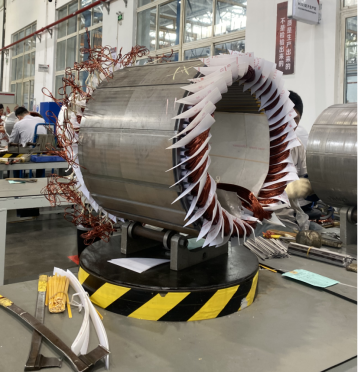The structure of an electric motor is a complex and fascinating system that plays a vital role in a variety of applications, from industrial machinery to household appliances. Understanding the components within an electric motor and their functions can provide valuable insights into its operation and efficiency.
The core of an electric motor consists of several key components that work together to convert electrical energy into mechanical motion. The main components include the stator, rotor and housing or frame. The stator is the fixed part of the motor, usually consisting of a series of coils or windings that create a magnetic field when current passes through it. This magnetic field interacts with the rotor (the rotating part of the motor), causing it to turn and produce mechanical energy.

The rotor is usually connected to the shaft and is responsible for transferring the mechanical energy generated by the motor to the external load. The enclosure or frame provides support and protection for the internal components, as well as a means of dissipating the heat generated during operation.
In addition to these major components, an electric motor may also include various ancillary components such as bearings, brushes, and cooling systems. Bearings are used to support and guide the rotating shaft, reducing friction and wear, while brushes (common in brushed DC motors) are used to transfer power to the rotor. A cooling system such as a fan or radiator is critical to dissipating the heat generated by the generator during operation and ensuring that it remains within a safe operating temperature range.
The specific design and arrangement of these components can vary depending on the type of motor, whether it is a DC motor, an AC motor, a synchronous motor, or an asynchronous motor. Each type has its own unique structure and working principle to meet the specific requirements of different applications.
Simply put, the structure of an electric motor is a complex system of individual components that work in harmony to convert electrical energy into mechanical motion. Understanding the inner workings of electric motors can provide valuable insights into their performance and applications in various industries.
Post time: May-11-2024

